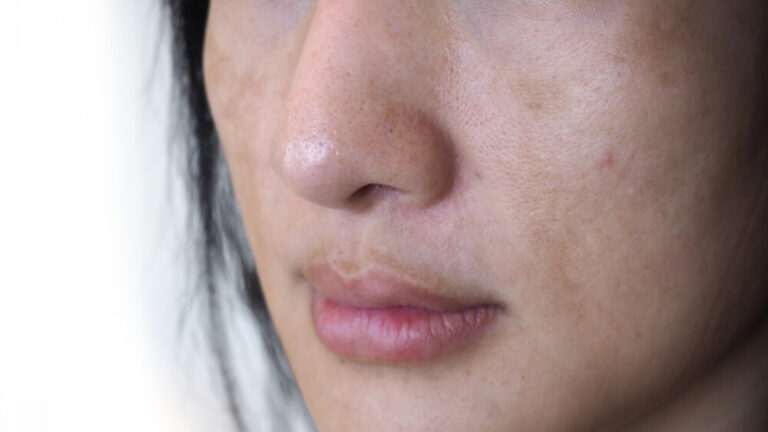Microneedling has become a popular cosmetic treatment in recent years, thanks to its ability to improve the appearance of fine lines, wrinkles, and acne scars. However, it is also gaining traction as a potential treatment for melasma, a common skin condition that causes brown or gray patches on the face.
Microneedling involves using a device with tiny needles to create micro-injuries in the skin, which stimulates the body’s natural healing response. This leads to increased collagen and elastin production, which can improve the texture and tone of the skin. In the case of melasma, microneedling may also help to break up the excess pigment that causes the discoloration.
While there is still much research to be done on the efficacy of microneedling for melasma, early studies have shown promising results. It is important to note, however, that microneedling is not a one-size-fits-all treatment and may not be suitable for everyone.
Key Takeaways
- Early studies suggest that microneedling may be an effective treatment for melasma by breaking up excess pigment in the skin.
- While microneedling shows promise as a treatment for melasma, it is important to consider potential side effects and risks before undergoing the procedure.
What is Microneedling?
Microneedling is a minimally invasive cosmetic procedure that involves the use of a device containing tiny needles to create controlled micro-injuries on the skin. This process stimulates the body’s natural healing response and promotes the production of collagen and elastin, which are essential for healthy skin.
The procedure can be performed on various areas of the body, including the face, neck, and hands. Microneedling is considered a safe and effective treatment for a range of skin concerns, including fine lines, wrinkles, acne scars, and hyperpigmentation.
The Science Behind Microneedling for Melasma
Microneedling, also known as collagen induction therapy, is a minimally invasive procedure that involves using a device with tiny needles to create controlled micro-injuries on the skin. This process triggers the body’s natural healing response, stimulating collagen and elastin production, and promoting skin rejuvenation. Microneedling has been gaining popularity in recent years as a treatment for various skin conditions, including melasma.
Collagen Induction Therapy
Collagen induction therapy is the primary mechanism behind microneedling’s effectiveness in treating melasma. The tiny needles create micro-channels in the skin, which stimulate the production of collagen and elastin. Collagen is a protein that gives skin its structure, while elastin provides elasticity and flexibility. As we age, the production of collagen and elastin slows down, leading to sagging, wrinkling, and other signs of aging.
Melanin Regulation
Melasma is a common skin condition that causes dark, discolored patches on the skin, particularly on the face. It is caused by an overproduction of melanin, the pigment that gives skin its color. Melanin is produced by melanocytes, which are located in the epidermis, the outermost layer of the skin.
Benefits of Microneedling for Melasma
Here are some of the benefits of microneedling for melasma:
- Reduces pigmentation: Microneedling stimulates the production of collagen and elastin, which helps to reduce hyperpigmentation and improve skin texture. This can help to reduce the appearance of melasma.
- Increases product absorption: Microneedling creates tiny channels in the skin, which allows for better absorption of topical products. This can enhance the effectiveness of skincare products used to treat melasma.
- Minimal downtime: Microneedling is a minimally invasive procedure that requires little downtime. Patients can return to their normal activities within a few days.
- Safe and effective: Microneedling is a safe and effective procedure for treating melasma. It is a non-surgical option that does not require the use of harsh chemicals.
Potential Side Effects and Risks
Microneedling is generally considered a safe procedure, but like any medical treatment, it carries some risks. Patients considering microneedling for melasma should be aware of the potential side effects and risks before undergoing the procedure.
Common Side Effects
The most common side effect of microneedling is mild redness and swelling at the treatment site. This usually resolves within a few days of the procedure. Some patients may also experience mild bruising or pinpoint bleeding.
In rare cases, patients may develop an infection at the treatment site. Signs of infection include increased pain, redness, and swelling, as well as fever and chills. If these symptoms occur, patients should contact their healthcare provider immediately.
Microneedling can also cause hyperpigmentation or darkening of the skin in some patients. This is more common in patients with darker skin tones. However, this side effect is usually temporary and resolves within a few weeks.
Microneedling vs Other Treatments
Chemical Peels
Chemical peels are a common treatment for melasma. They work by applying a chemical solution to the skin that causes the top layer of skin to peel off. This removes the pigmented cells and allows new, healthy skin to grow in its place. However, chemical peels can be harsh on the skin and may cause irritation, redness, and peeling for several days after the treatment. Additionally, chemical peels may not be effective for all types of melasma.
Laser Therapy
Laser therapy is another option for treating melasma. It works by using high-energy light to break up the pigmented cells in the skin. Laser therapy is a non-invasive treatment that can be effective for some types of melasma. However, it can be expensive and may require multiple sessions to achieve the desired results. Additionally, laser therapy can cause redness and swelling for several days after treatment.
Compared to chemical peels and laser therapy, microneedling is a less invasive and more affordable option for treating melasma. Microneedling works by creating tiny punctures in the skin with a small, handheld device. This stimulates the body’s natural healing process and encourages the growth of new, healthy skin cells. Microneedling can be effective for treating melasma and has minimal downtime and side effects.



